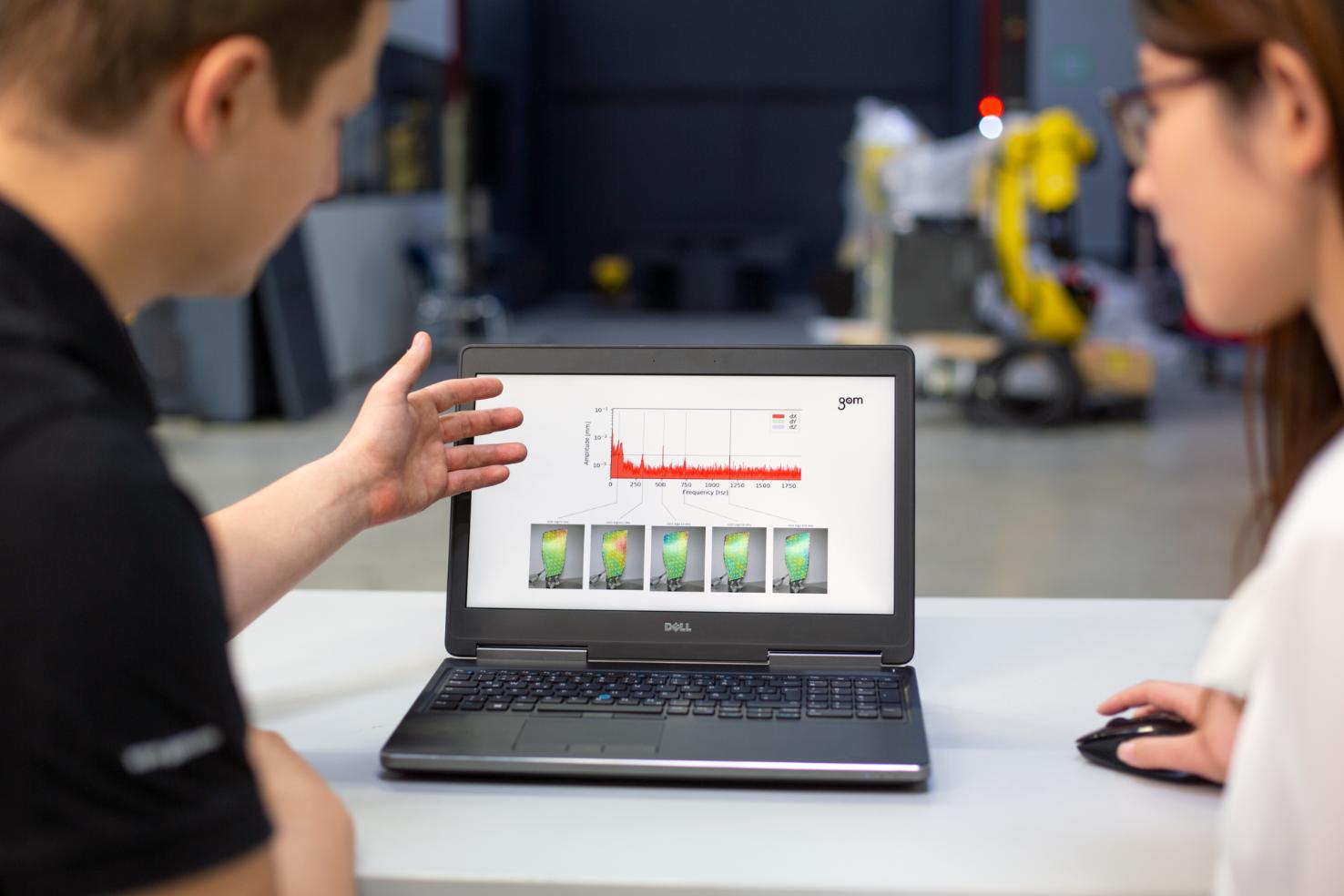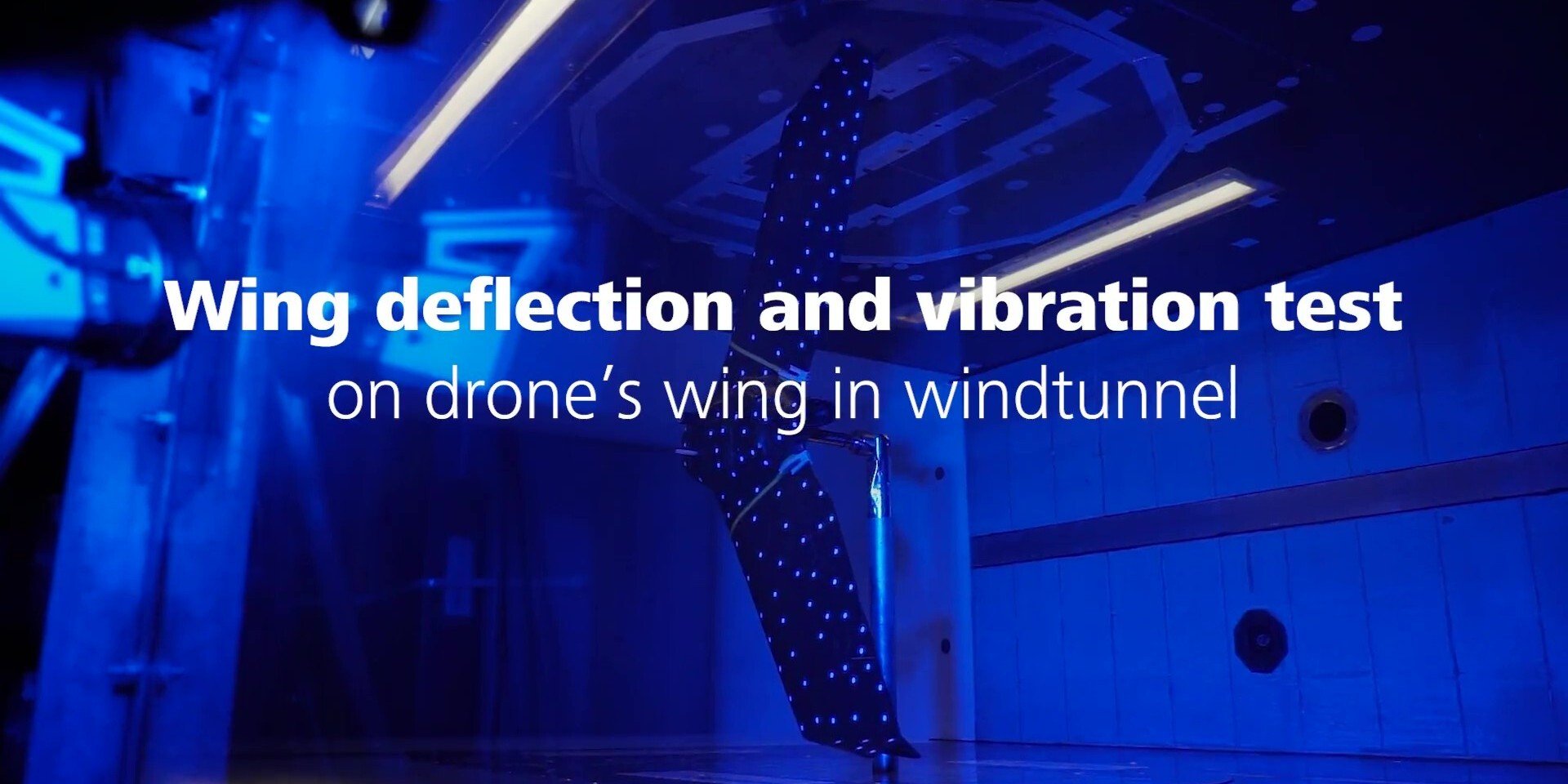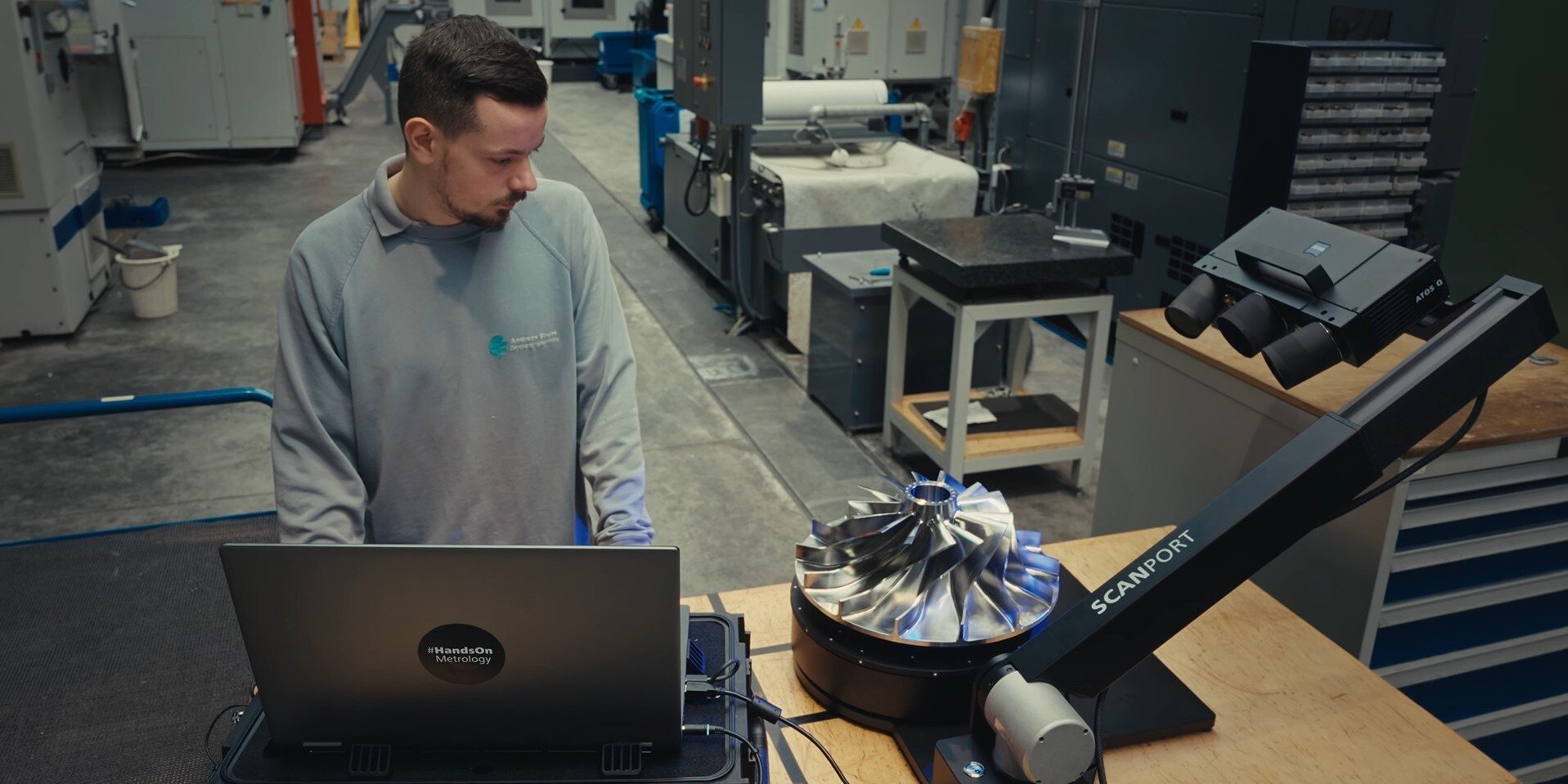Structural, Fan blade out, Material, Landing gear, Thermal expansion, Engine, Bird strike, Composite Testing
AEROSPACE PRODUCT DEVELOPMENT AT ITS BEST.
Trilion supports the aerospace testing industry and its suppliers by providing precise part geometries and material characteristics. This data is used as input parameters for finite element simulations and flow analysis, for verification of simulations against real measurements in wind tunnels and climate chambers, as well as for reverse engineering. Furthermore, optical 3D scanners are suited for quality control of complex freeform surfaces. Therefore, they are used to inspect airfoils of aircraft engines, terrestrial gas & steam turbines, and turbocharging systems.
Aerostructure
Wind Tunnel Testing
3D scanning verifies the "as-built" vs. "as designed" shape of scale models in wind tunnel testing to ensure that scaling does not cause deviations. In addition, GOM's ARAMIS high-speed deformation measurement system analyzes vibrations and deflections caused by wind load in the wind tunnel online and in real-time. This makes it possible to analyze wing behavior at specific speeds and in different flight maneuvers.
Reverse Engineering
Internal and external 3D aircraft scanning supplies 3D CAD information that accurately reflects the current state of the build of the airframe and ancillary equipment. The dense point cloud data represents a solid base for CAD modeling, thus allowing reliable planning of aircraft design and electronics.
Digital Assembly
Acquisition of "as-built" data and reverse engineering play key roles as links between the physical and digital model environments. Full aero surfaces are vital for scale-model wind tunnel testing, CFD model creation, symmetry checks, and finite element methods to ensure that computer simulations are valid.
Measuring the entire aircraft within one coordinate system also supports digital assembly, and capturing various positions of the movable control surfaces is essential to performing motion studies. Time-effective data acquisition results in cost-effective, fast, and easy integration into downstream processing requirements.
Fuselage & Cabin
CFD Analysis & CAD Comparison
Computer simulations are used to optimize aircraft design during the development phase. GOM's ATOS 3D digitizer supplies dense and precise polygon mesh representations of an aircraft's "as-built" condition to obtain a realistic matching CFD analysis. The 3D data is also valuable for symmetry checks and for detecting damage to working prototypes, caused for example by hard landings.
Material, Jointing & Component Testing
Optical metrology analyzes the mechanical properties and behavior of materials, joints, and components. GOM's ARAMIS sensors can be integrated into existing test environments, test stands, and testing machines. The non-contact sensors measure full-field 3D strain and deformation of soft and rigid materials under mechanical or thermal load. Thus conventional extensometers and strain gauges can now be replaced by GOM's real-time 3D surface deformation analysis.
FEM Deformation Verification
GOM's deformation measurement systems are widely used throughout the aerospace industry to measure and verify deformations in lightweight structures during operation. The systems are easy to integrate into test environments such as climate chambers, wind tunnels, fatigue test stands, etc. In addition, GOM software supports numerical result verification of the captured full-field 3D data.
High-Speed ARAMIS
Dynamic deformation measurement visualizes the behavior of aerodynamic structures in real use. During running operations, for example, real-time shape, vibration, acceleration, deformation, and imbalance can be analyzed.
Trilion is an authorized reseller of Photron cameras and has an agreement with Photron to be the sole source provider in the USA of Photron cameras for use with the ARAMIS digital image correlation system. Trilion has unique experience and capability to provide application-specific training and support for Photron cameras. Support includes high-speed digital image correlation applications such as ballistic impact, bomb blast effect testing, crash testing, Hopkinson Bar testing, etc.
Trilion is also a reseller of Phantom, Fastec, and Shimadzu cameras, and can readily import calibration and test images from any external camera stereo pair.
Rocket Nozzle Hotfire Testing
The ARAMIS data, as full-field image data, is intuitively understood. Image data is an ideal format for humans to understand. We analyze the ARAMIS results, and there are no arguments about the data, like we had with strain gauges; it is intuitively obvious what is occurring to our structures.Learn more
Dr. Paul Gradl
NASA Marshall Space Flight Center, testing hot fire rocket motors
Download NASA's Technical Report
Space Shuttle Measurements
Trilion was called on twice to support urgent Space Shuttle program tests. In 2003-2004, we were an integral part of the Return to Flight program. After the loss of the Orbiter Columbia from a wing foam impact that had occurred at launch, ARAMIS became the required DYNA model validation tool during the extensive impact testing program. ARAMIS with high-speed cameras was used at NASA Glenn in Cleveland for 6 x 6 and 6 x 12-inch coupon tests and at Southwest Research Institute in San Antonio for full-scale wing impact tests. The images show the test setup and typical dynamic displacement results.
In 2011, Trilion was called upon to make ARAMIS measurements at Launch Complex 39A at Kennedy Space Center during a tanking test, as part of the root cause investigation for the STS-133 stringer cracking issue. This effort entailed rapid fabrication of custom ARAMIS sensors, which were successfully monitored from 3.5 miles away in the Firing Room at the Launch Control Center, during the 12-hour duration test. John Tyson and Tim Schmidt were given a NASA Team Award, and Tim Schmidt was awarded a Silver Snoopy for leadership of the External Tank Photogrammetry Team. The Silver Snoopy is the Astronaut’s personal achievement award.
Learn moreDownload NASA's Technical Report
Want to learn more?
Our team can discuss and demonstrate most of our products and applications virtually to you today!

Find out more about our latest aerospace projects
1 min read
How ATOS Q and ZEISS ScanPort Are Transforming Aerospace Manufacturing
Ben Eisdorfer: Dec 11, 2025
1 min read
Moving Quality Upstream: A Smarter Path to Precision
Ben Eisdorfer: Nov 19, 2025
1 min read
WEBINAR: Next-Gen Digital Material Testing: ASTM-Certified Precision
Ben Eisdorfer: Sep 24, 2025




